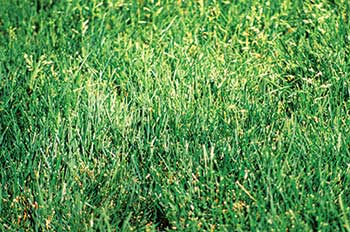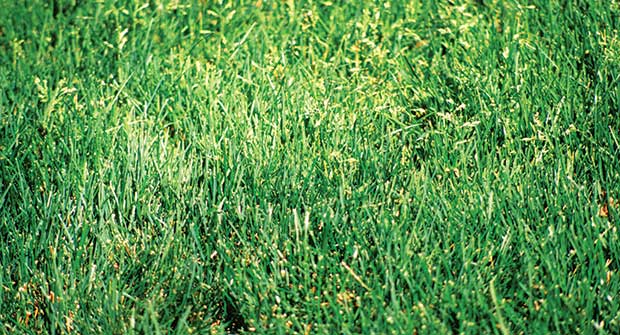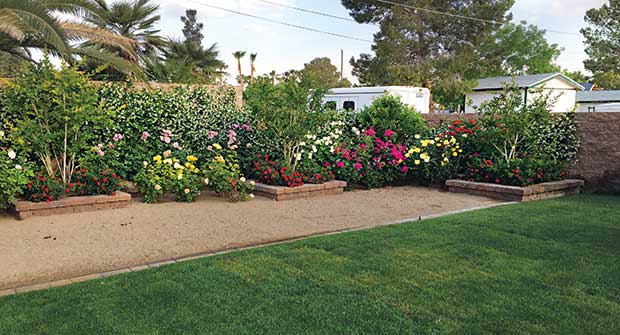
Poa annua, or annual bluegrass, is a problematic winter weed for turfgrass. Lawn care operators offer some solutions to help get a leg up on the pesky weed.
Poa annua, despite its name, can be both an annual and a perennial weed. Cooler climates typically have perennial Poa annua and warmer climates have annual Poa annua.
“A lot of what we see here in southern Oregon is perennial types (of Poa annua),” says Andy Burlison, owner of New City Lawn Care in Medford, Ore. “Glyphosate and a sod cutter is the best management practice.”
Rotation, rotation, rotation
Patrick Beaman, owner of GrassMasters in Wilson, N.C., says he is seeing some herbicide resistance in Poa annua.
GrassMasters provides lawn maintenance and lawn care to 90 percent residential and 10 percent commercial clients.
Beaman says last fall and this spring were high-pressure seasons for Poa annua in the Transition Zone. Last fall, he applied preemergent herbicides to warm-season turf, but conditions were dry.
“On lawns where it was not watered, the preemergent (application) lost some efficacy and resulted in outbreaks in the spring,” he says. “Spring 2020 was also cool and wet, and now that May has gotten here, temperatures have finally reached a place to help burn it out.”
Beaman uses a surfactant and an adjuvant to help disperse the preemergent sprays. In the fall, he plans to rotate products with the active ingredients of indaziflam, simazine or prodiamine.
“Going forward, the key is going to be product rotation and multiple modes of action,” he says. “I will probably include a postemergent herbicide in every preemergent round to help target new Poa.”
Soil temperatures matter
For perennial Poa annua, it’s critical to keep up with sprays, says Brad Herrle, lead lawn technician for Lawn Rx in Latrobe, Pa. Lawn Rx provides maintenance, lawn care, tree and shrub care and pest control services for an approximately 90 percent residential and 10 percent commercial clientele.
“Mesotrione is the active ingredient of choice to combat Poa that has already germinated,” he says. “Multiple applications are usually needed to control Poa, potentially over a period of several years as new Poa could germinate the next year even if one controls the existing Poa in a given year. Space applications per label guidelines as close together as possible.”
Herrle says one client has struggled to keep Poa annua in check even after a preemergent application was made last fall and one this year using prodiamine. With fewer than 10 inches of snow all winter, he says it’s likely the soil was too warm.
“My theory is that the barrier broke down too fast because of how mild it was for us,” he says. “Soil temperatures were above normal all winter and hit 55 degrees F in February (which is unusual).”
Cultural strategies
Pros say other cultural practices may also help manage Poa annua.
“We try to first recommend cutting higher, watering properly and good fertility to leave less of a carbon footprint,” says Tyler Toole, a supervisor with Nature’s Way Complete Grounds Care in Burlington, Ky. “We notice that Poa annua is more of a low-growing bluegrass, it never really gets top growth and has multiple seedheads.”
Nature’s Way provides lawn care and maintenance, landscape design, hardscape installation and snow removal for a primarily high-end residential clientele. Management for both Poa annua and Poa trivialis is similar. Nature’s Way uses an integrated pest management program to get ahead of Poa annua.
“We have a program in the fall here that works as a preemergent for annual bluegrass that comes in for early spring,” he says. “We use mesotrione that we apply as a blanket application at 32 oz. per acre, which is a very pricey application but effective. We also spray it as a postemergent for Poa as we see it throughout the year. We add in triclopyr to spike the mix and methylated seed oil.”


